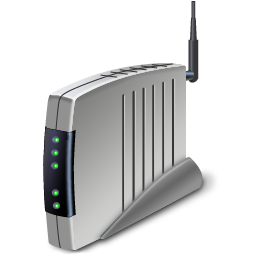Wireless Networking

From a simple wireless keyboard or mouse to keep your desk free of clutter to advanced printing or scanning of documents to a machine in another room, wireless has become so prevalent today that it is hard to imagine everyday computing without it. Setting up a wireless network can seem a daunting task but at Get The Tech Out we can assist you in setting up a secure and stable wireless network.
Let's start with a look at some of the wireless technology available today!
There are 4 versions of wireless connectivity currently in use. To make wireless consistent for everyone, these versions are controlled by a group called IEEE (Institute of Electrical and Electronics Engineers) and they classify wireless in a category called 802.11. Under the category of 802.11 there are versions a, b, g, and n. We mention this in an effort to help you understand those cryptic numbers you see when you are looking at laptops or other wireless devices. For example, you may see a laptop that is 802.11b/g compliant. What this means is that the wireless capability of the laptop can "talk" to either a 'b' or a 'g' wireless router but not an 'a' or 'n' wireless router. A router simple 'routes' the information to the appropriate computer.
So what does the a, b, g, and n mean? These letters reference the speed of data transfer between wireless devices and the band at which it transfers the data. This may still be confusing so lets put this in a chart so we can compare.
802.11a
802.11b
802.11g
802.11n
Transfer
Speed
~78 m
~38 m
~38 m
~30 m
Range
(indoor)
2.4 & 5.0 GHz
2.4 GHz
2.4 GHz
5.0 GHz
Band
300 Mbit/s
54 Mbit/s
11 Mbit/s
54 Mbit/s
You may be familiar with the band (frequency) since it is the same as a cordless telephone you may have purchased in the past. As you can probably guess, the cordless telephone and your wireless may interfere with each other since they are on the same band. Microwave ovens also function on the same band.
From the chart at the left we can see that the 802.11n is by far the fastest and has the farthest range. Since 802.11n is the newest technology this is what we can expect. The most common version available today is the 802.11g. Cost is a big
factor in determining whether you would be interested in 802.11g or 802.11n. Version 802.11b is outdated and slower so this will probably not be a viable solution for you however there are still many systems which continue to use this version.
You may have also noticed the range of each version. These ranges are approximate since many factors affect the ability of the wireless components to "talk" to each other. Metal or dense walls and/or high volumes of radio interference from computers such as a server room may decrease the wireless effectiveness so it is important to evaluate the placement of wireless routers.











